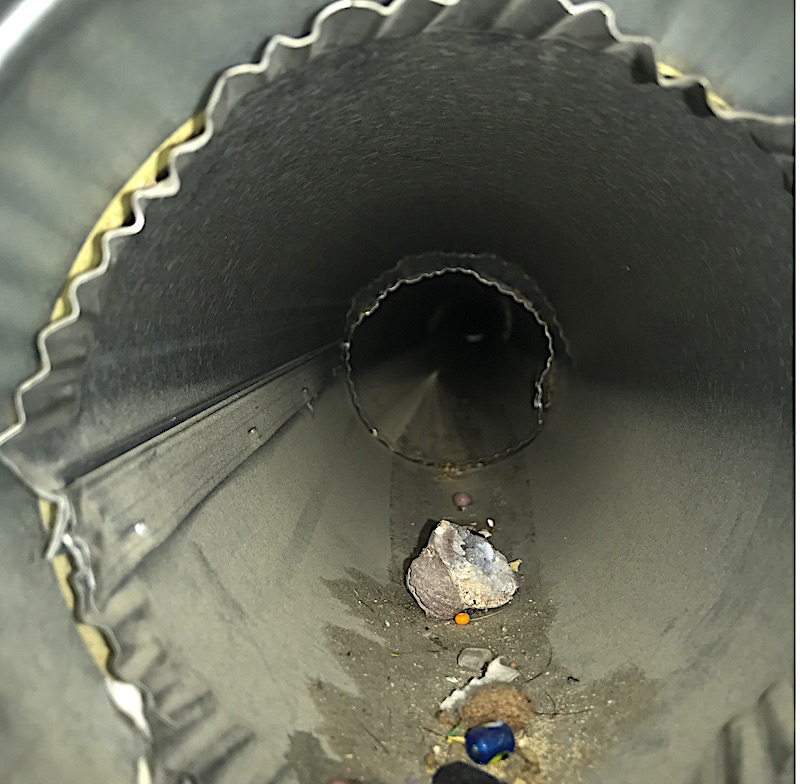The Home Inspector's Guide to Air Duct Cleaning, Part 5: How Homeowners Can Prevent Duct Contamination

Whether or not a homeowner decides to have the air ducts in their home professionally cleaned, committing to a good preventative maintenance program is essential to minimizing duct contamination.
To prevent dirt and debris from entering the system, the homeowner should:
use the highest efficiency air filter recommended by the manufacturer of the heating and cooling system;
change the air filters regularly;
change the air filters more frequently if they become clogged;
be sure there are no filters missing, and that air cannot bypass the filters through gaps around the filter holder;
be sure to ask the service provider to clean the cooling coils and drain pans when having their heating and cooling system maintained or checked for other reasons;
during construction or renovation work that produces dust in the home, seal off supply and return registers, and do not operate the HVAC system until after the dust is cleaned up;
remove dust by vacuuming the home regularly. Use a high-efficiency (HEPA) vacuum cleaner or the highest-efficiency filter bags that the vacuum cleaner can use. Vacuuming can increase the amount of dust in the air, as well as inside the ducts, during and after vacuuming; and
be sure to operate and maintain the humidifier strictly as recommended by the manufacturer, if the heating system includes in-duct humidification equipment.
The Role of Moisture
Moisture should not be present in ductwork. Controlling moisture is the most effective way to prevent biological growth in air ducts. Moisture can enter the duct system through leaks, or if the system has been improperly installed or serviced. Research suggests that condensation (which occurs when the surface temperature is lower than the dew point temperature of the surrounding air) on or near the cooling coils of an air conditioning unit is a major factor in moisture contamination of the entire system. The presence of condensation or high relative humidity (RH) is an important indicator of the potential for mold growth on any type of duct.
Controlling moisture can often be difficult, but here are some steps a homeowner can take.
To prevent ducts from becoming wet, a homeowner should:
promptly and properly repair any leaks or water damage;
pay particular attention to the cooling coils, which are designed to remove water from the air, and can be a major source of moisture contamination of the system that can lead to mold growth;
make sure the condensate pan drains properly. The presence of a substantial amount of standing water and/or debris indicates a problem that requires immediate attention. Check any insulation near the cooling coils for wet spots;
make sure the ducts are properly sealed and insulated in all unconditioned spaces, including the attic and crawlspace. This will help prevent moisture accumulation due to condensation from entering the system, and will help the system work as intended. To prevent water condensation, the heating and cooling system must be properly insulated; and
if the air-conditioning system is being replaced, make sure that the unit is sized properly to the home, and that all ductwork is sealed at the joints. A unit that is too big will cycle on and off frequently, resulting in poor moisture removal, particularly in locales that experience high humidity. Also, make sure that the new system is designed to manage condensation effectively.
The Home Inspector's Guide to Air Duct Cleaning, Part 4: Helping a Homeowner Choose a Duct Cleaning Service Provider
The Home Inspector's Guide to Air Duct Cleaning, Part 6: Unresolved Issues of Duct Cleaning

